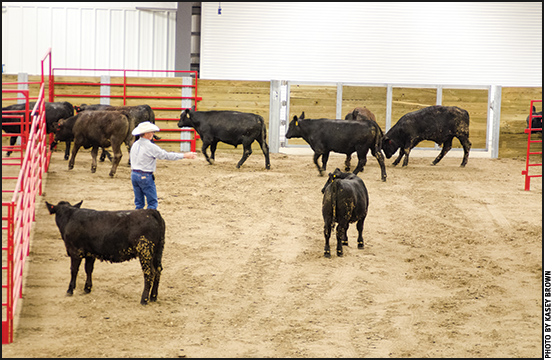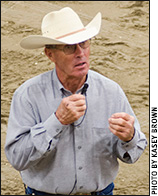
Welfare Benefits of Low-stress Handling
A good relationship between handler and cattle increases well-being for both parties.
Inappropriate handling episodes occur when handlers don’t understand how to perform the task. We must take responsibility for our actions and set our animals up for success, Tom Noffsinger, a feedlot veterinarian and animal-handling consultant, told attendees of the 4th International Symposium on Beef Cattle Welfare in Ames, Iowa, July 16-18.

Tom Noffsinger demonstrated working cattle with low-stress methods through a handling facility, chute and Bud Box.
A lot of bad situations come from untrained handlers or untrained cattle. Proper facility design and handler training can create voluntary cattle flow without the use of driving aids such as flags, paddles, sticks and prods.
“If you keep doing what you’re doing and it’s bad, you’re going to keep getting what you’ve got,” Noffsinger asserted. He said some Australian friends quip that Americans don’t roll their own cigarettes anymore. Americans tend to get frustrated and keep doing what isn’t working instead of stopping and re-evaluating the situation.
Cattle need to see where you want them to go, and handlers should put pressure on the front of the animal, not the back.
“You have to interact with the correct portion of the cow — the eye,” Noffsinger explained. “When cattle can see you, they can interact with you. They crave to see the destination and the source of guidance simultaneously.”
He highlighted a few caregiver goals, which included greeting new arrivals to alleviate some relocation stress, demonstrate communication skills, encourage health status honesty, recognize abnormalities, allow the immune system to function, enhance water and feed intake levels, and encourage rest and recuperation. Cattle that are uncomfortable in their home won’t drink.
Cattle lick and chew when comfortable, he observed. The goal is to have them comfortable during processing, or anytime interacting with humans.
He urged operation owners and management to realize that success and harmony start at the top. Make sure every interaction between caregivers and animals is a good one.






